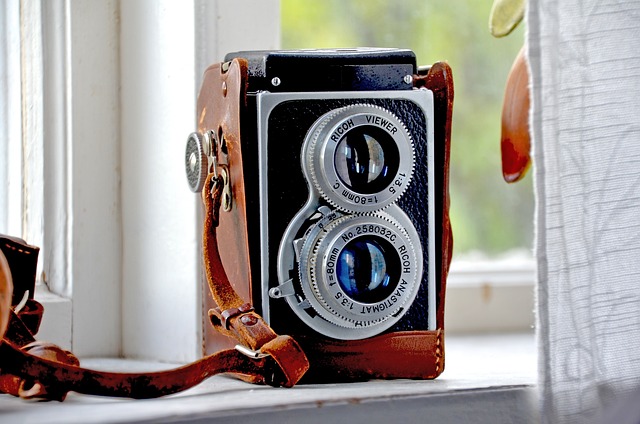By Tim Lambert
Photography in the 19th Century
Photography is the art of capturing images. The word photography means drawing with light. It comes from the Greek words photos graphe. The word was coined by John Herschel in 1839. Photography began when people discovered that certain light-sensitive chemicals would ‘fix’ an image when exposed to it.
Joseph Nicéphore Niépce took the first photo in 1826. Niépce used a pewter plate coated with light-sensitive substances to make an image of the scene outside his window. The exposure time was about 8 hours, but photo technology rapidly advanced. It soon became easier and much quicker to take photos.
In 1839, Louis Daguerre invented the Daguerreotype. He used silver-plated sheets of copper, treated with chemicals. Daguerre’s invention reduced exposure time to minutes and made photography practical.
In 1841, Henry Fox Talbot patented the calotype process. He used sheets of paper treated with silver chloride. It produced a negative image from which a positive image was made. In 1851, Frederick Scott Archer invented the collodion process, which used glass plates coated with collodion and treated with certain chemicals. It made photography even easier. In 1871, Richard Leach Maddox invented gelatine dry plates, which made cameras smaller.
In 1888, George Eastman received a patent for a roll film camera. He also registered the trademark Kodak. The new Kodak camera made photography a popular hobby.
The first photo to capture human beings was taken by Louis Daguerre in 1838. In 1839, Robert Cornelius took the first portrait photo (himself). The first woman to be photographed was Dorothy Catherine Draper in 1840. Today, we take photos for granted, but in the 19th century, ordinary people thought it was wonderful that they could have portraits of their loved ones.
It’s not certain which was the first photo of an animal, but it may be a cow photographed by Joseph-Philibert Girault de Prangey.
The first time a photo appeared in a newspaper was in 1848. It appeared in a French publication called L’illustration. Photography soon came to play an important part in journalism. Famous photographer Roger Fenton took many photos during the Crimean War (1853-1856). He was one of the first war photographers.
In 1860 James Wallace Black took the first aerial photo, from a balloon in the USA. In 1861, Thomas Sutton took the first colour photo (of a ribbon). However, colour photos remained rare until the 1970s.
People also took photos of nature. On 2 January 1839, Louis Daguerre took the first photo of the Moon (Sadly, a fire in his laboratory destroyed the image). The oldest surviving photo of the Moon was taken by John Draper in 1840. The first photo of the Sun was taken in 1845. The first photo of a solar eclipse was taken in 1851 by Julius Berkowski.
Astronomers also took photos of other Heavenly bodies. The first photo of Jupiter was taken in 1879 by Irish astronomer Agnes Mary Clerke. In 1880, Henry Draper took the first photo of a nebula (The Orion Nebula).
People also took photos of the weather. In 1847, Thomas Martin Easterly became the first man to photograph lightning. The first known photo of a tornado was taken in 1884.
Meanwhile, in 1843, a woman botanist, Anna Atkins, became the first person to publish a book illustrated with photos instead of drawings.
On 5 February 1861, Samuel Goodale patented the first moving picture peep show machine. Before then, they had magic lanterns that projected still images onto a screen, but his machine was the first to give the illusion of moving images when you looked into it and turned a handle. The famous ‘What the Butler Saw’ machine was a different device called a mutoscope. It was invented in 1894.
The first underwater photo was taken in 1899 by Louis Marie Auguste Boutan.
Photography in the 20th Century
Charles Martin took the first colour underwater photo off the coast of Florida in 1926.
Aerial photographer Albert W. Stevens took the first photograph of the curvature of the Earth in 1930 and the first photograph of the Moon’s shadow on Earth during a solar eclipse in 1932.
The first satellite was launched in 1957. Soon, the first photos were taken in space. In 1959, Luna 3 sent the first photos of the dark side of the Moon. Automatic spacecraft took close-up photos of planets. In 1962, Mariner II sent the first close-up photos of Venus. In 1969, Mariner 6 sent the first close-up photos of Mars. The other planets followed. In 2015, the New Horizons probe sent the first close-range pictures of Pluto, a dwarf planet on the edge of the Solar System.
On 12 November 1966, astronaut Buzz Aldrin took the first selfie in space.
Edwin Land introduced the first instant camera in 1947. Russell Kirsch created the first digital image in 1857. The first digital camera was created by Steve Sasson in 1975.
Photography in the 21st Century

In the early 21st century, mobile phones with built-in cameras made it easy for nearly everyone to take photos and upload them onto the internet. Flickr was founded in 2004. Instagram was launched in 2010.
Lastly, 19 August is World Photography Day.
Last Revised 2025